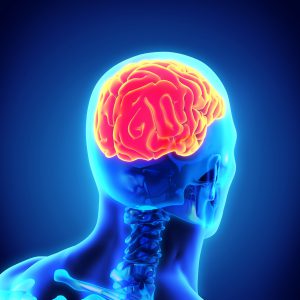Table of Contents
Post-Concussion Syndrome (PCS) as a Neck Problem
 The sudden deaths of high profile football players like Junior Seau have made the complications of head trauma and concussions a hot button topic in sports and medicine. While concussions are considered mild traumatic brain injury, the truth is any brain injury is anything BUT mild.
The sudden deaths of high profile football players like Junior Seau have made the complications of head trauma and concussions a hot button topic in sports and medicine. While concussions are considered mild traumatic brain injury, the truth is any brain injury is anything BUT mild.
While most people will recover from the effects of a concussion within 7-10 days, approximately 15% of patients experience symptoms beyond 30 days. When symptoms persist, a diagnosis of post-concussion syndrome or PCS is made. .
The symptoms of PCS may include:
- Headache and migraine
- Vertigo or loss of balance
- Brain fog/difficulty with concentration
- Memory dysfunction
- Dysautonomia and fatigue
A Concussion Can Also Injure the Neck
Most research in the past 10 years has been on the structural and chemical changes to the brain after a head injury. However, the brain is not the only anatomy injured during a concussion. Recent studies have shown that damage to the neck occurs during a head injury, playing a major role in concussion-like symptoms [1-3].
Dr. John Leddy, University of Buffalo Concussion Research Lab, demonstrated that post-concussion syndrome can stem from the brain or from the neck, and that you couldn’t tell just by symptoms alone [1].
Your average concussion requires a LOT of force. About 60 g’s is required to concuss an adult human, while it takes less than 10 g’s to damage important ligaments in the neck. This means that you can’t have a concussive head injury without also injuring the neck. [3]
The interesting feature about whiplash and post-concussion syndrome; the symptoms are essentially identical.
Post-Concussion Syndrome
Headaches
Dizziness/Balance problems
Brain Fog
Cognitive dysfunction
Fatigue
Whiplash
Neck pain
Headaches
Dizziness
Brain fog
Cognitive dysfunction
While you may have suffered a concussion, there is a very strong chance that your post-concussion symptoms may be coming from the neck. Researchers now describe this as cervicogenic post-concussion syndrome.
Reversing Cervicogenic PCS by Correcting the Atlas
Finding effective treatments for the lasting disability of concussion have been difficult. Interventions like hyperbaric oxygen therapy, cognitive behavioral therapy, vestibular rehabilitation, and plain old walking are just some of the treatments being investigated to help people with post-concussion syndrome (PCS).
The Blair Upper Cervical procedure may play an important role in reducing headache, dizziness, and brain fog related to cervicogenic PCS. When a head injury occurs, the joints, ligaments, and muscles of the upper neck become damaged leading to abnormal biomechanics of the upper cervical spine.
The effects of this neck trauma is 2 fold:
- Inflammation and damage to the structures of the neck bombard the brain with nerve signals that trigger a pain response. This barrage of pain signals can be the trigger for headache disorders which are common after head trauma.
- Disruption of the ligaments in the upper neck interfere with the body’s joint position system. When your brain has poor joint-position sense, then it can trigger symptoms like vertigo and balance problems.
It’s important to recognize this as the neck is often overlooked as a source of headache and vertigo symptoms. Many times PCS cases come to a NUCCA doctor only after they have endured an exhaustive course of medications, exercise, and therapy, while the primary symptom generator was ignored or never addressed.
Chiropractors using precise upper cervical procedures, like Blair Upper Cervical Technique, often see excellent outcomes with PCS for the simple fact that they addressed the main symptom generator. With a precise and gentle correction to the neck, Upper Cervical chiropractors can often help PCS patients see an astonishing improvement within weeks after months of constant suffering. If you have any questions call 207-846-5100 or email uppercervicalyarmouth@gmail.com.
- Leddy J, Baker J, Merchant A et al. Brain or Strain? Symptoms alone do not distinguish physiologic concussion from cervical/vestibular injury. Clinical Journal of Sports Medicine. 2015 May; 25(3): 237-242
- Marshall C, Vernon H, Leddy J, Baldwin B. The role of the cervical spine in post-concussion syndrome. Physician Sportsmedicine. 2015 Jul; 43(3): 274-284.
- Ellis M, Leddy J, Willer B. Physiological, vestibulo-ocular, and cervicogenic post-concussion disorders: an evidence-based classification system with directions for treatment. Brain Injury. 2015; 29(2): 238-248.
This article was contributed by Dr. Jon Chung of Keystone Chiropractic in Royal Palm Beach Florida https://chiropractorwellington.com/
